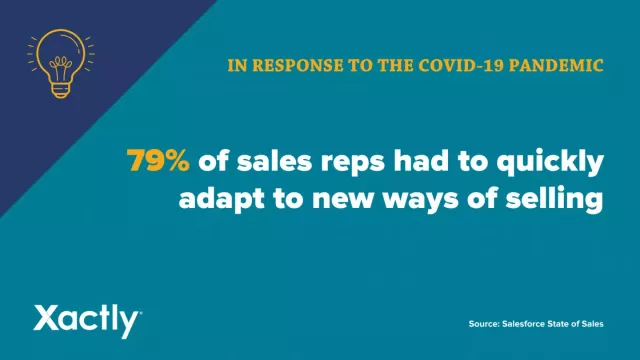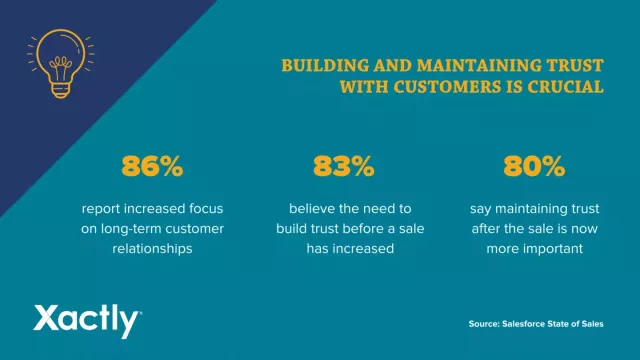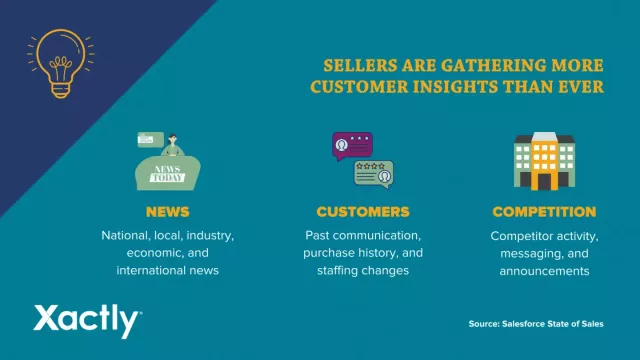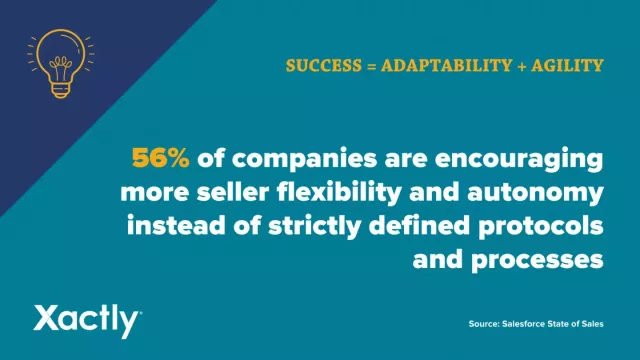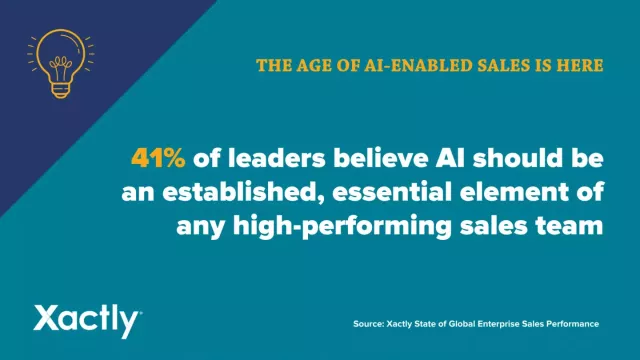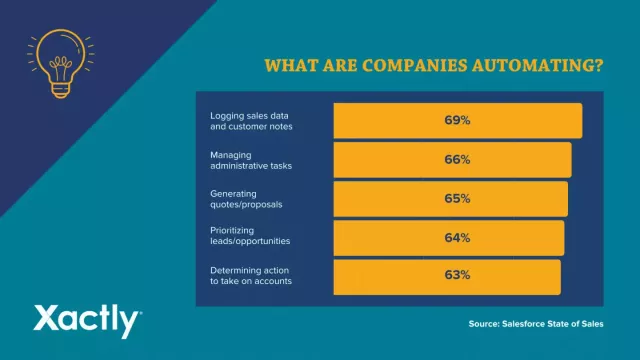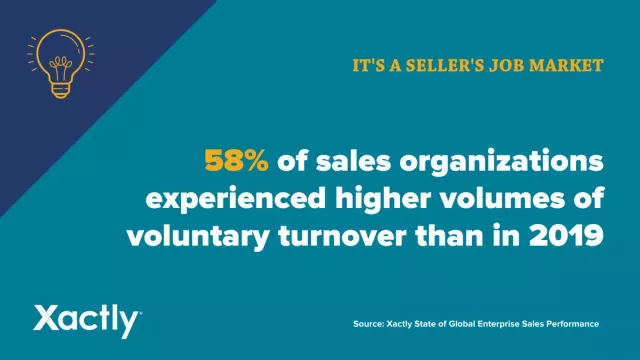There are 13.7 million people actively working in sales or sales-related occupations, according to the Bureau of Labor Statistics. And when the entire world paused due to the COVID-19 pandemic, it was a major adjustment for sales teams worldwide to move to remote operations almost overnight.
But over the course of the past year, salespeople and organizations alike have proved resilient, found new ways to connect with buyers, and are continuing to adapt in order to achieve their revenue goals.
Now, as we begin emerging from more than a year of global disruption, it’s clear that these changes aren’t going anywhere anytime soon, and the role of the sales rep is also evolving at a rapidly increasing pace. According to Salesforce, 64 percent of salespeople say they have new job responsibilities as a result of the pandemic and economic uncertainty, and 58 percent expect their roles to change permanently.
So how are companies shifting their selling strategies to succeed in 2021 and beyond? We surveyed more than 2,000 sales and revenue leaders in our State of Global Enterprise Sales Performance survey and found five ways selling is changing and how organizations are adapting in response. (We’ll give you a hint: it has to do with customer-centric selling and digital transformation.)
1. Virtual selling environments are challenging, but creating stronger relationships.
The Xactly State of Global Enterprise Sales Performance report found that today, 50 percent of companies are still operating fully remotely, with 19 percent planning to return to the office when possible.
This transition to remote selling was especially challenging for outside reps, who typically rely on in-person meetings to build relationships with customers. Inside reps, on the other hand, haven’t experienced the same level of disruption since the majority of their customer interactions are held over the phone and through virtual meetings and demos. For them, it was merely a change in office setting.
But overall, it doesn’t appear that remote selling environments have negatively impacted sales interactions. Rather, it seems to have done the opposite. Organizations are reporting a boost in their connections with both customers and their internal teams.
Salesforce data shows that 44 percent of outside sales and 64 percent of inside sales have stronger relationships with customers compared to before the pandemic. In addition, Xactly research found that two-thirds of sales leaders say team communication has become more frequent, and as a result, 67 percent report that their relationships with direct reports are stronger than in the past.
2. Building trust with customers is more important than ever.
According to Salesforce, 88 percent of reps say volatile economic conditions are making anticipating customer needs more important than ever, and the majority of both inside and outside sellers (76 percent and 68 percent, respectively) are being encouraged to prioritize long-term customer relationships over short-term wins.
Doing this successfully requires an in-depth understanding of customer needs, meaning the more data you can compile about prospects, the better. The most common ways sellers gather insights are through a combination of news sources, customer profiles, and competitor research, according to Salesforce.
And this research pays off. Salesforce reports that high-performing reps are more likely to compile data from the sources above than low performers. Xactly research also found that 24 percent of sales leaders say that knowledge of products, industry, and customer needs is the most important quality of a top-performing salesperson.
3. There’s no one-size-fits-all approach to selling.
When organizations moved to remote working, there was widespread anxiety among sales leaders about changing goals and the productivity of their teams. The outcome, however, has been far different than anticipated.
More than half of sales reps (52 percent) say they’ve been motivated to work harder this year. Xactly data also shows that teams are more productive since transitioning to remote working, and sales effectiveness increased 46 percent over the last 10 months.
A combination of factors is helping sellers stay motivated and boost productivity. Most notably is that alongside increasing flexibility and autonomy, activity logging is being more strictly enforced. Salesforce data shows that 63 percent are using formal reporting mechanisms and logging more details about customer interactions into CRMs.
That means there’s more customer data available for sales to access, helping reinforce stronger relationships with prospects and customers.
4. Automated, AI-enabled technology has become essential.
The need for more precise data entry and increased relationship-building efforts led more organizations to rethink their sales processes. As a result, many are beginning to automate processes to free up sales rep time and improve account prioritization, forecasting, and decision making.
In the past, AI-enabled technology has been deemed somewhat overrated, but 80 percent of companies agree AI provides real value for sales organizations, with 41 percent believing it to be essential to help sales teams stay connected, informed, and efficient.
5. Turnover is increasing, and the job market is hot.
Historically, economic uncertainty has coincided with increased unemployment. Many individuals are hesitant in these situations to leave and start a new job for fear of layoffs. However, the move to remote working has opened the door for a highly competitive sales job market.
Sellers can now foster customer relationships from anywhere in the world, and as a result, sales rep turnover is higher than ever. HubSpot reports that on average, sales attrition is around 16 percent.
The Xactly State of Global Enterprise Sales Performance report found that in 2020, more than half of organizations (58 percent) had reps voluntarily leave at a higher rate than years prior. Technology and software businesses were hit the hardest, with 67 percent experiencing increased voluntary sales turnover.
According to HubSpot, nearly half of employees (48 percent) would take a new job for a 10 percent increase in pay. This is leading organizations to re-evaluate their incentive compensation plans and use AI-enabled benchmarking tools to build more competitive pay structures.
Empowering Your Team to Succeed
To compete in today’s evolving selling environments, you need to embrace the ongoing change and empower your teams to succeed in new ways. The strongest organizations have realized that this requires:
-
Flexibility: Allow sellers to adapt the way they sell while reinforcing customer data entry into CRM
-
Technology and Data: Give sellers intelligent solutions to increase their productivity and prioritize deals more effectively
-
Competitive Pay: Use incentives to motivate performance, as well as attract and retain top talent
As we continue to define the new sales normal, businesses are continuing to shift towards a more digital environment, and the sooner companies get on board, the stronger they’ll be. To learn more sales trends, best practices, and ways you can empower your team to succeed, register to join us at Xactly Unleashed Virtual Summit on May 11-12.

